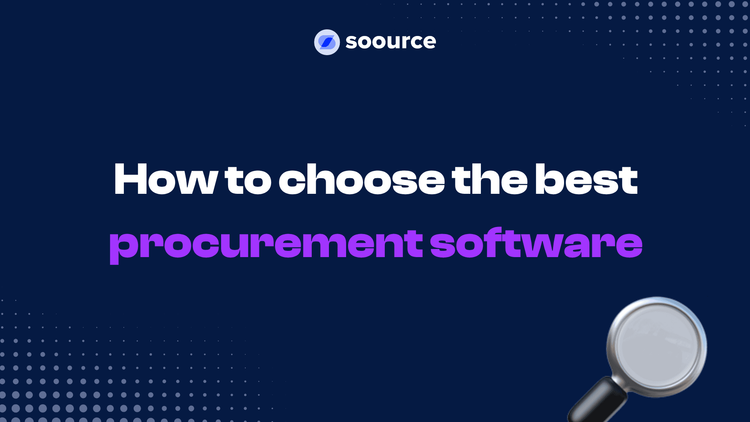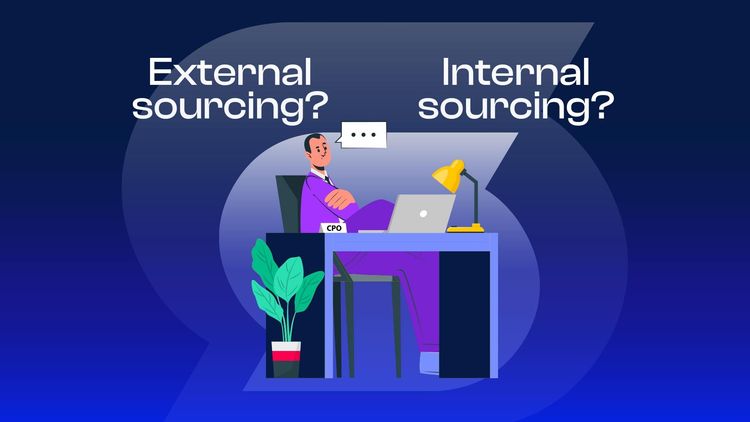AI and Procurement: hype or real competitive advantage?
20/8/2025
•7 MIN READ
In procurement today, AI is one of the hottest topics. But is AI truly transformative, or just another media buzzword? According to the State of AI in Procurement 2025 report, as many as 80% of Chief Procurement Officers consider investing in AI a strategic priority over the next 12 months, with 66% ranking it as high priority (Art of Procurement, 2025).
AI does, in fact, bring tangible benefits such as:
Operational efficiency A KPMG study estimates up to an 80% reduction in time spent on repetitive procurement processes.
Real savings Intelligent spend analysis in indirect procurement can generate up to 15% savings in a single year (Consulting Quest, 2025).
Risk management AI helps identify early signals of financial or operational risk before they affect the business, improving compliance and auditability. Predictive monitoring means safer, more reliable decisions.
Strategic decision support AI tools don’t just analyze trends; they also suggest optimal strategies based on past performance, market conditions, and risk scenarios (Art of Procurement, 2025).
AI adoption also comes with limitations that must be carefully considered. IBM estimates that 59% of CPOs see predictive analytics as one of the most important applications of generative AI, but only those who manage to make their first implementation truly work see lasting benefits (IBM).
In addition, many current systems remain unsatisfactory: research by Airbase shows that only 30% of users leveraging AI in procurement are “very satisfied.”
Other critical issues include:
- Bias in data models AI is only as powerful as the data it is trained on. If historical procurement data contains imbalances, distortions, or implicit preferences (e.g., favoring suppliers from certain geographies or of a particular size), AI will tend to replicate or even amplify them. This can lead to less diverse supplier bases or reputational risks, especially in ESG-driven contexts where inclusion and sustainability are strategic. To mitigate this, it is essential to rely on verified and up-to-date data, while introducing ongoing monitoring and review mechanisms. AI should be applied to operational, repetitive, low-value tasks — but critical evaluation and final decision-making must remain in human hands.
- Lack of internal training Many AI projects fail not because of the technology itself, but because the people using it are not adequately prepared. Procurement is built on analytical, negotiation, and relational skills: AI must be seen as a tool that empowers professionals, not one that replaces them. Training teams to interpret AI-generated data, validate insights, and embed these tools into daily processes is essential. Without a widespread digital culture and strong governance, there is a real risk of creating a “trust gap” between what the machine suggests and what people are willing to act on.
- Ethics and data privacy The use of AI raises important risks related to transparency, accountability, and the handling of sensitive data. With the AI Act (effective August 1, 2024), the EU classifies AI systems into four risk levels: unacceptable, high, limited, and minimal — plus a separate category for LLMs (GPAI), which come with specific transparency obligations. Solutions classified as limited or minimal risk must always include human oversight, meaning that AI assists but does not make decisions autonomously. This approach safeguards privacy, ensures accountability, and promotes trust while remaining consistent with ESG principles. For further details, here’s a clear and comprehensive overview of the AI Act.
To sum up, the true value of AI as a competitive advantage only emerges when:
- there is a clear problem to solve (e.g., wasted time, slow approvals, fragmented or low-quality data);
- AI is used to empower people, not replace them;
- technology, processes, and team skills are aligned so that AI insights translate into effective actions and informed decisions.
AI is not a wave to ride blindly. But when applied to the right pain points in procurement, it can become a powerful, tangible strategic lever that truly makes a difference.
If you want to see how AI can be used in a practical and safe way, start with tools designed specifically for procurement. With Soource, you can identify new suppliers, access accurate and reliable data, and manage your vendor base as a true strategic asset. All with an AI solution classified as limited risk, an intuitive interface, and the constant support of a dedicated training team.
Try it with a live demo
18/11/2025
•3 MIN READ
How to choose the best procurement software

10/9/2024
•8 MIN READ
Internal vs. External Sourcing in procurement: A strategic balance for optimal Supply Chain Management

4/9/2025
•3 MIN READ
5 mistakes slowing down sourcing (that hardly anyone sees)
FAQ
We have collected the most frequently asked questions here, but don't hesitate to contact us if you have any doubts or want to know more about Soource.
Is Soource compatible with my ERP (Enterprise Resource Planning or Procurement Suite)?
Yes, Soource is compatible with major ERP and procurement software like SAP Ariba, Jaggaer and other enterprise systems. You can integrate it for bidirectional data exchange or use it as a plug & play solution, without the need for integration.
Are my data on Soource protected and secure?
Absolutely. All corporate, personal and supplier data remains your property and is processed according to GDPR and European regulations. Generic data is anonymized to improve platform and Soource community performance.
Where does supplier data on Soource come from?
Soource's database combines:
- Certified and public sources
- Data collected from intelligent web crawling
- Information automatically extracted from corporate emails
Today Soource offers the largest database of Italian companies with direct email contact.
Can I attach files to RFI, RFQ or RFP on Soource?
Yes, you can attach documents in any format to your requests (RFI - Request for Information, RFQ - Request for Quotation or RFP - Request for Proposal). In particular, for RFIs, it is recommended to include a technical specification sheet of the product to get more detailed responses from suppliers.
Can I send follow-ups to suppliers with Soource?
Yes. With Soource you can filter suppliers who haven't responded and send a mass follow-up in one click. This helps you double the response rate, up to 80% on average, improving RFI, RFP and RFQ management.
Is Soource compliant with the European AI Act?
Yes. Soource's artificial intelligence is compliant with the European Union's new AI Act, falling into the zero-risk category, as it only supports internal activities and does not automate outward processes or critical decisions.
Why use Soource for RFI and RFP?
With Soource you can:
- Create RFI (Request for Information) and RFP (Request for Proposal) in just a few clicks
- Send them automatically to selected suppliers
- Analyze responses with artificial intelligence
- Extract and compare certifications, availability, technical capabilities
You save time and identify the best suppliers more quickly.
Can I also use Soource for RFQ?
Yes. Soource also supports RFQ (Request for Quotation) to request economic offers. The platform automates:
- RFQ sending
- Response reception and reading
- Comparison of prices and conditions